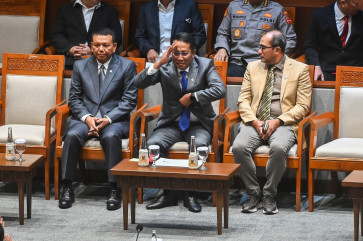Popular Reads
Top Results
Can't find what you're looking for?
View all search resultsPopular Reads
Top Results
Can't find what you're looking for?
View all search results`Most laundered money is from corruption'
Among other bad practices, the anti money-laundering agency listed that corruption has so far this year become the main source of activity leading to the crime of money laundering, as shown in its latest list of suspicious financial transactions
Change text size
Gift Premium Articles
to Anyone
A
mong other bad practices, the anti money-laundering agency listed that corruption has so far this year become the main source of activity leading to the crime of money laundering, as shown in its latest list of suspicious financial transactions.
The Financial Transactions Report and Analysis Center (PPATK) said last week it has so far this year collected data on 21,652 suspicious financial transactions from financial institutions such as banks, insurance companies, securities companies, investment companies and financing companies.
Of this total, 965 transactions have been analyzed in detail and the results sent onward to law enforcement agencies for further investigation - 443 to the National Police and the Attorney General's Office (AGO), 75 to the Corruption Eradication Commission (KPK), and the rest to other institutions.
Last year, the center received 10,432 reports on suspicious financial transactions, of which only 234 suspicious transactions were analyzed in detail.
"Most transactions records are collected based on requests from the law enforcement institutions. But the financial institutions are also obliged to report to us if they find any suspicious transaction," PPATK chairman Yunus Husein said.
From the total number of records on suspicious transactions received, the PPATK analyzed 296 suspicious transactions related to graft cases during the first 11 months of this year, representing 30.67 percent of the 965 reports analyzed.
After corruption, the second most commonly reported transactions related to cases of fraud, with 215 such transactions, making up 22.28 percent of the total.
Drugs-related cases were in third place with 87 financial transactions reported, or 9.02 percent of the total.
"Suspicious transactions have continuously increased, mostly from corruption-related cases," Yunus said.
Suspicious transactions related graft-cases analyzed by PPATK increased by 105.56 percent as of November from a year earlier, he said.
"Last year, we only analyzed 144 transaction records that were allegedly linked with graft cases."










